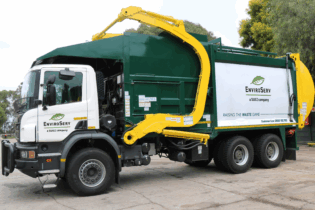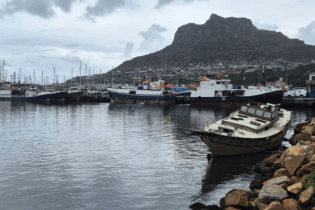It’s not every day or year that Johannesburg Water (JW) gets to launch two water reservoirs in less than six months.
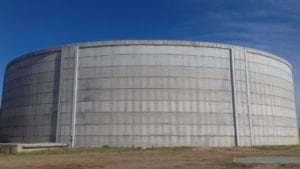 The Orange Farm and Diepsloot reservoirs were launched in January and March 2018, respectively. These are big, wide concrete structures that form distinctive landmarks. Diepsloot’s stands 12 m tall with a 55 m diameter and the Orange Farm Reservoir is 13 m high and 64.5 m across. Even though they’re imposing in terms of scale, people only really see their true significance if the taps ever run dry.
JW is a municipal entity, wholly owned by the City of Johannesburg as sole shareholder, and mandated to provide water and sanitation services to the residents of Johannesburg. The company’s strategic objectives are linked to the shareholder objectives through the Service Delivery Budget Implementation Plan (SDBIP) and cluster plans. JW is assigned to the Sustainable Services cluster. The relation between the company and shareholder is governed through the Service Delivery Agreement (SDA), which is reviewed from time to time.
JW provides water and sanitation services to an area stretching from Orange Farm in the south to Midrand in the north, Roodepoort in the west and Alexandra in the east.
The company employs 2 655 people and functions within operating regions, with 10 network depots and six wastewater treatment plants. The entity supplies 1 515 MLD of potable drinking water, procured from Rand Water, through a water distribution network of 12 066 km, including 122 reservoirs and water towers, and 37 water pump stations.
The spent wastewater is then collected and reticulated via 11 576 km of wastewater networks and 38 sewer pump stations. JW treats 841 MLD of sewerage at its six wastewater treatment works (WWTW), which include one of its biogas-to-energy plants where methane gas is converted to electricity.
The water entity has maintained consistency in building key infrastructure, keeping pace with the growing number of people coming into the city and ensuring a constant water supply to all residents.
The Orange Farm and Diepsloot reservoirs were launched in January and March 2018, respectively. These are big, wide concrete structures that form distinctive landmarks. Diepsloot’s stands 12 m tall with a 55 m diameter and the Orange Farm Reservoir is 13 m high and 64.5 m across. Even though they’re imposing in terms of scale, people only really see their true significance if the taps ever run dry.
JW is a municipal entity, wholly owned by the City of Johannesburg as sole shareholder, and mandated to provide water and sanitation services to the residents of Johannesburg. The company’s strategic objectives are linked to the shareholder objectives through the Service Delivery Budget Implementation Plan (SDBIP) and cluster plans. JW is assigned to the Sustainable Services cluster. The relation between the company and shareholder is governed through the Service Delivery Agreement (SDA), which is reviewed from time to time.
JW provides water and sanitation services to an area stretching from Orange Farm in the south to Midrand in the north, Roodepoort in the west and Alexandra in the east.
The company employs 2 655 people and functions within operating regions, with 10 network depots and six wastewater treatment plants. The entity supplies 1 515 MLD of potable drinking water, procured from Rand Water, through a water distribution network of 12 066 km, including 122 reservoirs and water towers, and 37 water pump stations.
The spent wastewater is then collected and reticulated via 11 576 km of wastewater networks and 38 sewer pump stations. JW treats 841 MLD of sewerage at its six wastewater treatment works (WWTW), which include one of its biogas-to-energy plants where methane gas is converted to electricity.
The water entity has maintained consistency in building key infrastructure, keeping pace with the growing number of people coming into the city and ensuring a constant water supply to all residents.
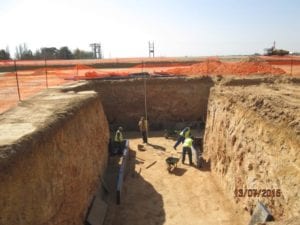 Orange Farm Reservoir
Orange Farm Reservoir
An analysis of the water network was conducted and it was identified that areas within the Orange Farm water subdistrict required infrastructure upgrading in order to improve residual and peak pressures, and also to accommodate future developments. The analysis identified that the storage capacity in the Orange Farm district had to be increased by constructing an additional33.5 Mℓ reservoir to eliminate current deficiencies in the network and cater for future water demands within the subdistrict. This initiative of constructing the new reservoir was imperative in supplying sustainable water to a developing community.
Diepsloot Reservoir
The Diepsloot area was previously supplied directly through a Rand Water bulk main, which was connected to the Pretorius Rand Reservoir. This feed did not provide storage for Diepsloot and surrounding areas including Dainfern and the new Steyn City.The absence of a dedicated water storage facility was a risk in terms of continuous supply and water security to the area. In addition, water requirements for the new development of Steyn City had also become a priority. The objective of this project was mainly to provide adequate water storage capacity for the residents of Diepsloot, Dainfern, Timsrand and Steyn City with a storage retention time of 28 hours. The need for a water upgrade infrastructure project was guided and informed by Johannesburg Water’s network hydraulic analysis and model, which justified the need for this and the other water upgrade project that was implemented in Diepsloot.
The project is also critical and strategic for JW’s water supply and distribution in complying with new requirements stipulated by Rand Water. JW now distributes water directly into its network: with the previous arrangement, most water supplied into Diepsloot was directly fed by Rand Water. This project is also a demonstration of JW’s commitment to upgrading services in low-income areas in a sustainable and cost-effective manner in line with its mission statement.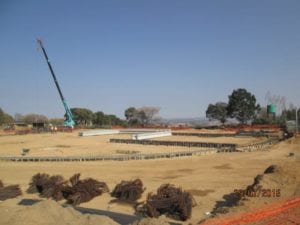 Feasibility process
Feasibility process
Building reservoirs is not cheap, and definitely not an overnight job. It can take years and even cost tens of millions of rands to erect a finished product. For instance, it cost in the region of R65 million to fully construct the Diepsloot Reservoir. The project began in 2012 and took five years to complete due to delays in land acquisition.
Round or square?
“The building of a reservoir starts off with the acquisition of land,” says Nthabiseng Seopela, project engineer, JW. “Reservoirs are one of those structures that cannot be built just anywhere.” The next stage of construction is the planning phase. This involves designing the reservoir, asking questions such as: What will it look like? Will it be round? How tall will it stand? Both the Diepsloot and Orange Farm reservoirs are a similar circular shape. “A circular shape requires less surface area than a square shape that holds the same amount of water. Therefore, it will also require less building material,” explains Nthabiseng. “A circular reservoir is more structurally stable in handling outward directed forces (tension forces). They require less steel for tension. This makes them cheaper than square reservoirs.” After the designing is done, an important aspect that needs to be catered for is the stakeholder consultation. Without proper consultation and approval from stakeholders, it can result in unrest and costly delays for the project. Nthabiseng agrees: “All stakeholders are important, regardless of how minimal their involvement is in the project: they’re essential to the project’s success.” During the 20-month construction period of the Orange Farm Reservoir, 64 skilled labourers were employed, 14 semi-skilled labourers, and two locals. These were absorbed by Murray & Roberts as part of their incubator programme. They were trained to be general construction foremen, with the possibility of working for the contractors on a full-time basis.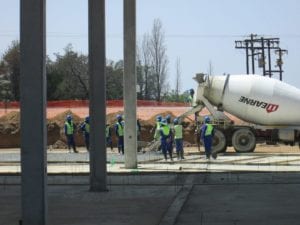 With the Diepsloot Reservoir, sub-contracting opportunities were created for the local community in the following areas:
With the Diepsloot Reservoir, sub-contracting opportunities were created for the local community in the following areas:
- brickwork and guardhouse construction
- brickwork to valve chamber housings
- paving
- hand excavation (around existing services)
- erection of the entire security fencing.







